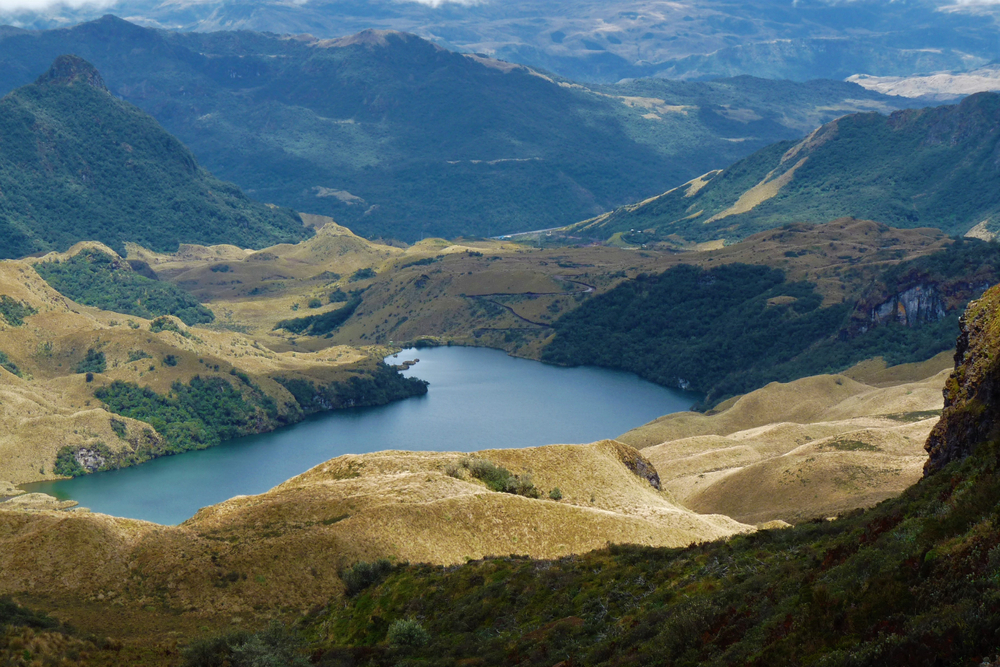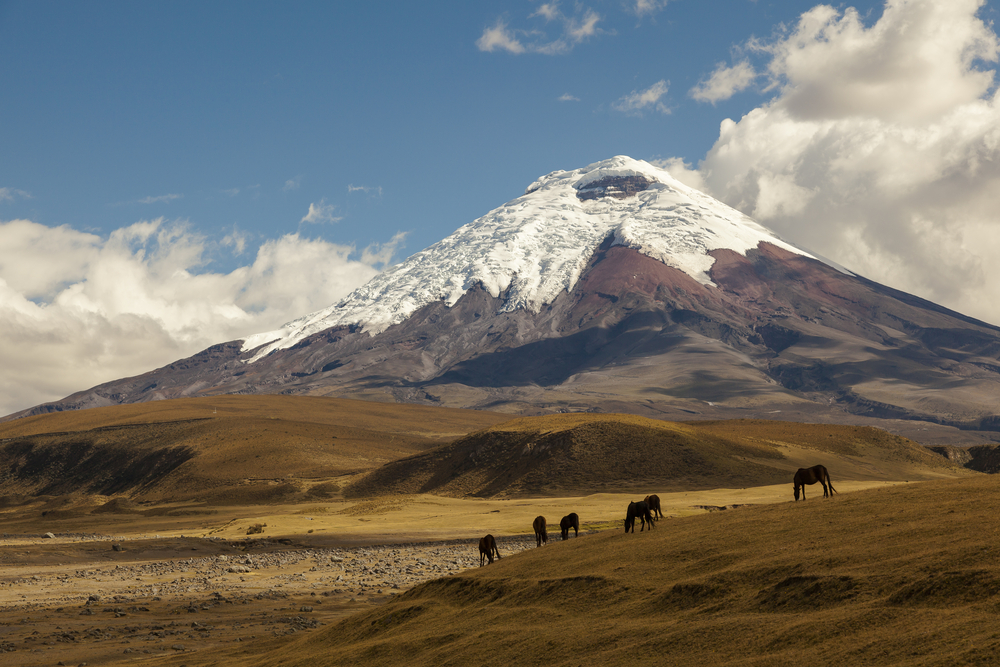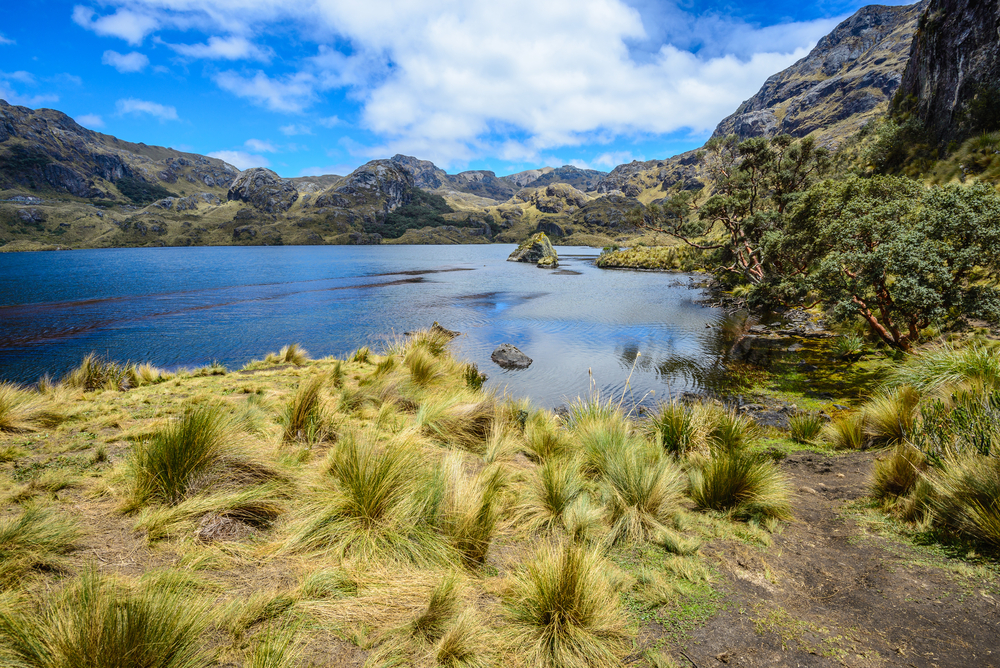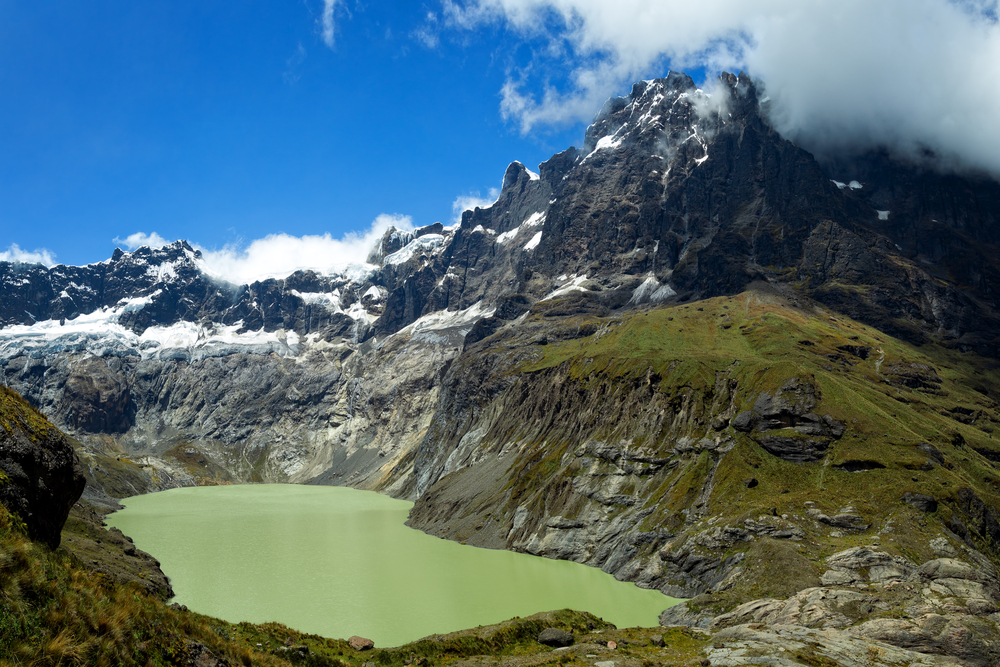Cayambe-Coca Overview
Cayambe-Coca National Park, known locally as Parque Nacional Cayambe-Coca, is a vast and ecologically diverse protected area in Ecuador.
Spanning approximately 1,688 square miles (4,370 square kilometers), the park extends across four provinces: Pichincha, Imbabura, Sucumbíos, and Napo. The park is named after Volcán Cayambe, a towering, glacier-capped stratovolcano that rises to 18,996 feet (5,790 meters), making it the third-highest peak in Ecuador and the only volcano in the world whose summit lies directly on the equator.
The park’s landscapes range from high-altitude páramo grasslands and cloud forests to dense Amazonian rainforest, creating an extraordinary variety of ecosystems within its boundaries. Numerous rivers, waterfalls, and thermal springs—such as the Papallacta Hot Springs—add to the park’s stunning natural beauty.
The diverse terrain of Cayambe-Coca National Park includes dramatic Andean peaks, mist-shrouded valleys, and lush lowland jungles. The high-altitude páramo is dominated by frailejón plants (Espeletia), which are specially adapted to the cold, humid conditions, while the cloud forests are filled with ferns, orchids, bromeliads, and towering trees.
Lower elevations transition into tropical rainforest, where thick vegetation thrives in the humid, warm climate. The park is a crucial watershed, supplying water to Ecuador’s capital, Quito, and feeding several major rivers, including the Coca and Napo, which eventually flow into the Amazon River.
Wildlife in the park is as diverse as its ecosystems, with a wide variety of species inhabiting different altitudes. Large mammals such as the spectacled bear, puma, Andean tapir, and white-tailed deer roam the cloud forests and páramo. The elusive mountain tapir, one of the rarest mammals in the Andes, also finds refuge here.
The park is a paradise for birdwatchers, with over 500 bird species recorded, including the Andean condor, plate-billed mountain toucan, sword-billed hummingbird, and the striking cock-of-the-rock. Many amphibians, reptiles, and insects, including endemic species, thrive in the park’s humid environments, making it a hotspot for biodiversity.
One of the most popular attractions in the park is Volcán Cayambe, which draws experienced mountaineers eager to climb its icy slopes. The Papallacta Hot Springs, located at an altitude of about 10,827 feet (3,300 meters), offer a relaxing experience with mineral-rich thermal waters heated by volcanic activity.
Hikers and nature enthusiasts explore the park’s numerous trails, which pass through breathtaking landscapes, past waterfalls, and into dense forests filled with unique flora and fauna. The San Rafael Waterfall, once Ecuador’s tallest waterfall at 492 feet (150 meters), was a major highlight before its dramatic disappearance due to geological changes in 2020. Visitors can also take guided wildlife tours, go birdwatching, or experience the park’s indigenous communities, learning about their traditions and sustainable practices.
Cayambe-Coca National Park faces several conservation challenges, including illegal deforestation, mining, and poaching, which threaten its fragile ecosystems. Climate change also impacts the park, accelerating glacial retreat on Volcán Cayambe and affecting water availability.
However, conservation efforts have led to improved park management, scientific research, and community-based initiatives to protect its rich biodiversity. The Ecuadorian government and environmental organizations continue working together to preserve this remarkable natural treasure while promoting sustainable tourism.
















































































